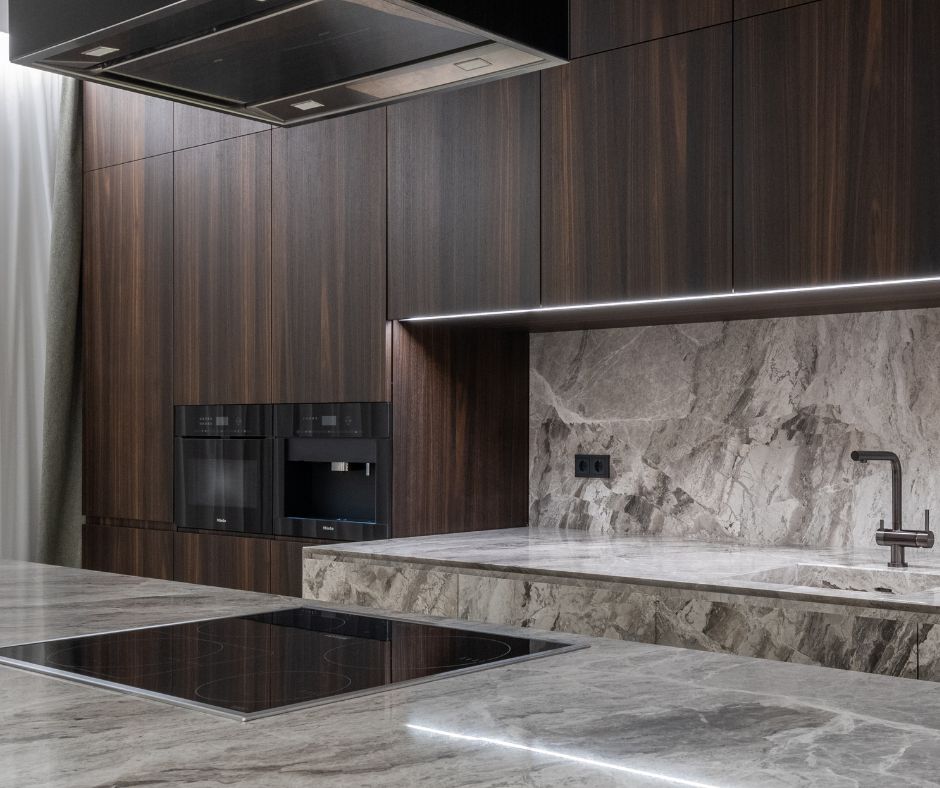Innovative kitchens are the breeding ground for new culinary traditions, and while induction cooking technology might appear to be a cutting-edge advancement, its roots can be traced back to the early years of the 20th century. The initial demonstrations in the 1930s fascinated audiences, showcasing the astonishing capability to boil water using magnetic energy without any visible heat source. However, it has only been in recent decades that, driven by significant strides in technology, efficiency, and design, induction cooktops have firmly established their place in contemporary kitchens.
In today's culinary landscape, a growing number of home chefs and passionate food enthusiasts are gravitating towards induction cooking for its striking blend of sleek aesthetics, exceptional precision, and unmatched energy efficiency. This innovative cooking method not only accelerates meal preparation but also transforms the art of home cooking, seamlessly merging the science of heat management with culinary creativity in every dish prepared on its elegant, polished surface. The right induction cooktop can even rival the speed of a microwave, ensuring that delicious family meals are ready in no time!
Enhancing Taste and Nutritional Value with Precision Cooking Techniques
Unlike traditional gas or electric ranges, induction cooktops heat cookware directly through electromagnetic energy. This groundbreaking methodology eradicates wasted heat, averts burnt edges, and provides exceptional control over both low and high temperatures. With such precise heat management, your ingredients retain more of their natural moisture, flavour, and nutritional integrity. Whether you are flash-searing proteins, gently simmering sauces, or quickly blanching vegetables, induction cooking simplifies the achievement of perfect results, preventing overcooking and nutrient loss.
Chic Induction Cooktops: Optimising Space While Reducing Kitchen Stress
In kitchens where every square inch is prized, induction cooktops shine not only in performance but also in style. Their flat, smooth surfaces blend seamlessly into your countertop, presenting a minimalist aesthetic that enhances space for food preparation, plating, or even casual dining experiences.
Unlike traditional gas hobs, which typically feature cumbersome grates and protruding burners, induction cooktops sit flush with the countertop. While ceramic stovetops may provide a sleeker appearance, they often remain perilously hot long after cooking is completed.
In contrast, induction surfaces cool down rapidly once the cookware is removed. The heat is generated through the magnetic interaction between the cooktop and the cookware, not by the cooktop itself, meaning that the glass surface retains significantly less heat. This feature not only simplifies cleaning but also enhances safety, creating a more secure cooking environment, particularly beneficial for households with children or pets who might be curious about kitchen counters.
The end result? A cooler kitchen with cleaner lines and greater flexibility—perfect for modern cooks who value both form and function.

Comprehensive Guide to Choosing the Ideal Cookware for Induction Cooking
Shifting to induction cooking may come with the bittersweet realisation that you might need to part ways with some beloved old pans. Since induction technology relies on magnetic energy for heat generation, not all pots and pans will be compatible with this method.
For cookware to function effectively on an induction cooktop, it must be crafted from ferrous (magnetic) metals, such as cast iron, carbon steel, or magnetic-grade stainless steel. A simple fridge magnet test can determine suitability: place a magnet on the bottom of the pan. If it clings firmly, you’re all set.
When selecting new cookware, choose pans with a heavy, flat base. This design guarantees optimal contact with the cooktop, ensuring even heat distribution crucial for achieving perfect browning, tender roasts, and crispy edges. Moreover, high-quality induction cookware is built to resist warping over time, maintaining consistent cooking performance for every meal.
Though it may be tough to let go of old favourites, consider this transition as an upgrade. In return, you gain enhanced control, quicker cooking times, and dishes that showcase even richer flavours and textures.
Induction Cookware Essential Checklist: Items You Must Have for Success
 Conduct a fridge magnet test—strong adhesion indicates induction compatibility
Conduct a fridge magnet test—strong adhesion indicates induction compatibility Opt for flat-bottom pans for optimal contact and heat distribution
Opt for flat-bottom pans for optimal contact and heat distribution Choose cast iron, carbon steel, or magnetic stainless steel cookware
Choose cast iron, carbon steel, or magnetic stainless steel cookware Avoid cookware made exclusively from copper, aluminium, or glass unless clearly marked for induction
Avoid cookware made exclusively from copper, aluminium, or glass unless clearly marked for induction Look for the induction symbol (which resembles a horizontal coil or a series of loops) stamped on the base or package
Look for the induction symbol (which resembles a horizontal coil or a series of loops) stamped on the base or package
Pro Tip: The induction symbol typically features a zigzag or spring coil graphic. Spotting this symbol ensures cookware compatibility.
Essential Installation Considerations for Your Induction Cooktop
Before embarking on your culinary journey with your new cooktop, there are several critical installation elements that must be addressed:
-
Professional Installation Is Crucial: Induction units often necessitate dedicated electrical circuits and specific clearances. Be sure to enlist professionals who understand these requirements.
-
Hire a Licensed Electrician: Wiring a high-powered induction cooktop is not a DIY project.
Learn why hiring a qualified electrician is essential. -
Check Your Power Setup: Some induction models require substantial power. Before making a purchase, ensure that your wiring meets the cooktop’s specifications.
Proper installation not only guarantees optimal performance but also ensures safety and longevity.
Key Insights on Induction Cooking
Induction cooking offers much more than mere speed or safety—it is inherently intelligent. With the right cookware and a professionally installed system, you can achieve meals that taste better, have richer textures, and are healthier, time after time. In today’s kitchens, precision cooking is not just desirable; it has become the new standard.
Frequently Asked Questions About Induction Cooktops
1. What Makes Induction Cooktops Superior to Gas or Electric Options?
Induction cooktops offer immediate heat control, improved energy efficiency, and enhanced safety features. Since they directly heat the cookware, meals cook more rapidly with less energy waste, while the surfaces remain cooler, significantly reducing the risk of burns.
2. Can I Use My Existing Pots and Pans on an Induction Cooktop?
Only if they are magnetic. Cookware made from cast iron or magnetic stainless steel is optimal. You can easily verify compatibility by placing a magnet on the base—if it sticks firmly, it’s suitable for induction use.
3. Does Induction Cooking Affect the Flavour of Food?
Yes, and in a beneficial way. Because induction cooking allows for precise temperature control, you can sear, sauté, or simmer without overheating, effectively preserving the natural flavours, textures, and nutrients far more efficiently than with inconsistent gas or electric heat.
4. Is Special Wiring Necessary for an Induction Cooktop?
Most induction cooktops require a dedicated electrical circuit along with specific voltage and amperage configurations. It is essential to have a professional electrician assess and install your wiring to ensure compliance with safety standards and guarantee optimal performance.
The post The Secret Ingredient in Modern Kitchens: Induction Cooktops Are Changing the Game appeared first on https://cookinggods.com
The Article Induction Cooktops: The Game-Changer in Modern Kitchens Was Found On https://limitsofstrategy.com


Your exploration of induction cooking’s innovative edge and historical roots really resonates with me. I’ve recently transitioned to using an induction cooktop in my kitchen, and I find it fascinating how it not only enhances my cooking speed but also greatly reduces heat in the kitchen, making the experience much more comfortable. It’s striking how this technology marries efficiency with a stylish design — I’ve enjoyed experimenting with precision cooking techniques that I never thought I’d have access to.
It’s great to hear how much you’re enjoying your induction cooktop! The reduction in heat around the kitchen is such a game-changer, especially in those warmer months when the last thing you want to do is make the kitchen an oven.
I’m thrilled to hear about your positive experience with induction cooking! If you’re looking to take your culinary journey even further, check out this link for some great tips and tools that can elevate your cooking game.
https://britsocdermpath.co.uk/ParentAler